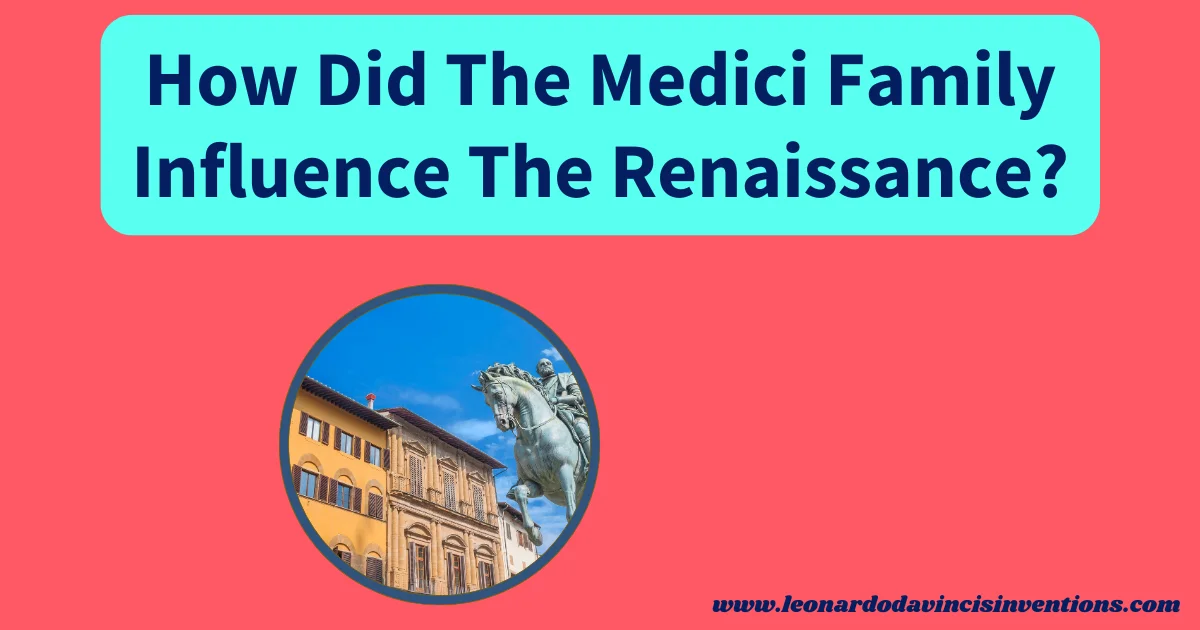
The Medici family significantly influenced the Renaissance by utilizing their wealth and power to support artists, thinkers, and innovative ideas in Florence.
Many people wonder how one family could shape so much of history. This post will explain how the Medici supported art, shaped politics, and sparked major changes in science and culture.
The Medici family played a significant role in funding and guiding the Renaissance by serving as powerful patrons to renowned artists such as Michelangelo and Leonardo da Vinci.
They invested in beautiful buildings, promoted scholars, and helped Florence become a center for learning and creativity. Their influence extended beyond financial gain, as they also exerted political control and fostered a spirit of discovery that transformed Europe.
The Medici Family’s Economic Power and Political Influence in Renaissance Florence
The Medici family gained immense financial power as successful bankers in Florence. Their resources allowed them to influence government, sponsor art, and transform the city-state into a vibrant center of culture and power.
The Rise of the Medici: Banking Family, Wealth, and Economic Influence
The Medici emerged as a dominant banking family in the early 1400s. Their Medici Bank became one of Europe’s most trusted financial institutions.
This wealth allowed the family to invest in business, land, and urban projects throughout Florence. With control over financial flows, the Medici earned respect and authority among the ruling elite and ordinary citizens.
Their economic influence extended past Florence, helping the family build international relationships with the papacy and major European courts. The Medici’s economic strength laid the foundation for their social ascent and long-lasting legacy.
Political Power: From Ruling Family to De Facto Rulers of Florence
The Medici family leveraged their wealth and influence to acquire political power, holding key government positions and shaping decisions within the Florentine Republic.
Cosimo de’ Medici led the family’s rise, using alliances and careful political maneuvering to become the city’s most powerful citizen. Lorenzo de’ Medici (“the Magnificent”) expanded this political power, turning the family into de facto rulers of Florence by controlling city institutions and fostering loyalty among citizens and officials.
The Medici’s influence over the government created stability and sparked rivalries. Over time, the family produced prominent leaders, including several Medici popes like Leo X, who shaped civic and religious life in Italy.
Florence as a Cultural Center: City-State Transformation and Political Alliances
The Medici transformed Florence into a city-state known for its art and learning. Their patronage of artists such as Leonardo da Vinci, Botticelli, and Michelangelo led to numerous artistic commissions that produced many Renaissance masterpieces and innovative architectural designs.
These projects attracted scholars and visitors. Strategic political alliances with other powerful families and European rulers strengthened Florence’s reputation and safety.
Through these efforts, Florence became a model for cultural revival and humanist education during the Italian Renaissance.

The Medici family, a wealthy banking dynasty from Florence, utilized their economic and political influence to promote the arts and inspire innovative ideas. Their investment in creative and intellectual pursuits changed Renaissance society and culture.
Art Patronage: Commissioned Artists, Masterpieces, and Patronage of Artists
Medici patronage played a central role in the rise of Renaissance art. The Medici family used their financial resources to commission artists such as Leonardo da Vinci, Michelangelo, and Botticelli.
Their support led to the creation of iconic masterpieces that defined the era. Cosimo de’ Medici and Lorenzo de’ Medici (“the Magnificent”) were patrons, funding individual artists and artistic movements.
Their commissioned artworks filled Florentine palaces, chapels, and public spaces, turning Florence into a cultural center. The family’s willingness to invest in innovation allowed artists to experiment with new techniques and themes.
By sponsoring sculptures, paintings, and decorative arts, the Medici family helped establish Florence’s reputation for beauty and creativity. This widespread patronage brought artists both local and international fame, ensuring that Renaissance art would continue influencing generations.
Support for Humanism and Education: Scholars, Learning, and Rebirth of Classical Ideas
The Medici family made Florence a center for humanist learning and scholarship. They invited European scholars and funded libraries, schools, and universities.
Cosimo de’ Medici supported the translation of ancient texts, bringing a rebirth of classical ideas in philosophy, science, and literature. Through their patronage of humanism, the Medicis fostered an educational environment that allowed thinkers such as Marsilio Ficino and Pico della Mirandola to pursue groundbreaking studies.
The family helped create connections among artists, scientists, and philosophers. Their Medici bank’s resources enabled long-term projects and promoted learning for the city’s elite and broader society.
Architectural and Cultural Projects: Building Cathedrals, Chapels, and Palaces
The Medici dynasty transformed Florence’s cityscape through ambitious architectural projects. They commissioned the construction and decoration of cathedrals, such as the Cathedral of Santa Maria del Fiore dome, and established landmarks like the Medici Chapel and grand palaces.
These investments significantly contributed to Florence’s emergence as a cultural and artistic hub. Buildings funded by the Medici became symbols of innovation and civic pride.
Their support for architecture encompassed religious sites, public spaces, and private residences, showcasing their wealth and influence. Through these projects, the Medici employed architects and artisans, ensuring that Florence’s architecture would stand as a testament to Renaissance ideals and the family’s legacy for centuries.
The Lasting Legacy of the Medici Family on the Renaissance and Beyond
The Medici family leveraged their immense wealth, significant political influence, and influential religious positions to shape European history. Their support for art, architecture, and education helped Florence become an important cultural center during the Renaissance.
Medici Popes and Religious Power: Influence on the Catholic Church
Medici family members reached the highest ranks in the Catholic Church and became some of history’s most influential religious leaders. The most famous Medici popes are Leo X and Clement VII.
Their roles as popes gave the family new opportunities to influence European culture and politics. As popes, they encouraged commissioning Renaissance masterpieces and approved major art and architectural projects, including St. Peter’s Basilica and essential works in Roman churches.
The Medici popes also played pivotal roles in significant historical events, including the Protestant Reformation and the dissemination of humanism in church teachings. Their religious power supported Medici political alliances and helped shape Catholic Europe for generations.
Their lasting influence on the church still resonates today, particularly in the art found within religious sites. This comprehensive overview of the Medici family will help you discover the Medici popes’ influence.
Legacy of Art Collections: Uffizi Gallery, Museums, and Enduring Impact
The Medici’s patronage of art led to one of the world’s most significant collections. Their love for art transformed Florence into a vibrant city-state deeply rooted in Renaissance art and culture.
The Medici commissioned artists such as Michelangelo, Leonardo da Vinci, and Botticelli to help create iconic masterpieces. They also gathered paintings, sculptures, and rare books, laying the foundation for the world-famous Uffizi Gallery and other museums.
These institutions continue to attract millions of visitors each year. The Medici collections made Renaissance art accessible to all, not just the elite.
Their dedication to collecting and displaying art ensured that Florence would remain a beacon for artists, scholars, and tourists. Museums filled with Medici artworks and manuscripts still shape how people learn about the Renaissance today.
Shaping History: Social Ascent, Political Alliances, and the Medici as Power Brokers
Rising from merchants to nobles, the Medici banking family became de facto rulers of Florence through economic influence and political maneuvering.
The Medici bank funded popes, monarchs, and city-states. Their financial power provided the resources to commission artists and build cathedrals, chapels, and palaces.
They formed political alliances across Europe, married into royal families, and exerted influence on government institutions in Florence and beyond. Cosimo de’ Medici and Lorenzo “the Magnificent” used their wealth and strategic marriages to secure control over the city-state.
This ability to shape political landscapes allowed the Medici dynasty to advance humanism, learning, and innovation. Their role as patrons and rulers helped spread Renaissance ideas and left a lasting legacy that shaped both history and the modern world.
Frequently Asked Questions
The Medici family supported artists, architects, and scholars in Florence. Their wealth and political power helped fund new works of art, shaped city politics, and brought attention to humanism.
Which best describes how the Medici family influenced the Renaissance?
The Medici family played a crucial role in initiating and fostering the Renaissance by providing financial support and patronage to artists, writers, and architects. They invested in projects and used their political power to promote creativity in Florence.
This support made Florence a center of art and learning during this period.
What was the influence of the Medici family and others like them?
Families like the Medici used wealth to influence culture, politics, and the arts. They funded new buildings, supported artists, and sponsored scholars, making their cities renowned for creativity and learning.
The Medici used these actions to gain respect and control in Florence. Other wealthy families in Italy followed similar paths.
How did the Medici family influence architecture?
The Medici family funded many famous buildings and projects. They paid for work on Florence’s churches, chapels, and public spaces.
Their investments led to developing new architectural styles and landmarks throughout the city. Examples include the Medici Chapel and the work of architect Filippo Brunelleschi.
How did the Medici family spread humanism?
The Medici supported humanist scholars and thinkers. They set up libraries and collected old books.
They sponsored research into ancient Greek and Roman ideas. Funding these projects helped humanism spread throughout Florence and into the rest of Europe.
How did the Medici influence the Renaissance?
Through their patronage, the Medici family helped artists like Michelangelo, Leonardo da Vinci, and Botticelli succeed. They also encouraged new ideas about science, art, and government.
Much of the art and culture that defined the Renaissance flourished because of the Medici’s support, which shaped Europe’s history.
Why were families like the Medicis important to the Renaissance?
Wealthy families, such as the Medicis, made the Renaissance possible by financially supporting artists, scholars, and architects. Without their support, many works of art and learning might not have been created.
Their influence also contributed to their cities’ growth in power and importance.
How corrupt was the Medici family?
The Medici family utilized their wealth and influence to control politics in Florence. Some viewed their actions as corrupt because they frequently employed secret deals and family ties to maintain power.
Although not all their actions were illegal, their methods sometimes contravened the rules of fair governance.
Why did the Medici family play an important role in the Renaissance because its members were apex?
Medici family members held top positions in Florence, including as leaders, bankers, and even popes. Their high status gave them the power to influence art, politics, and religion.
They helped guide the direction of the Renaissance and ensured that Florence remained a center of culture.
Who was the most powerful family in Italy?
The Medici family was one of Italy’s most potent and well-known during the Renaissance. Their control over Florence’s banking and politics set them apart from other families.
They also had influence in other cities and even in the Catholic Church.
How did the Medici family influence Michelangelo?
The Medici family discovered Michelangelo at a young age. They paid for his early training.
He lived with the family for a time. He learned from other artists at their court.
Their support allowed him to study classical art and develop his style, which led to many of his greatest works.
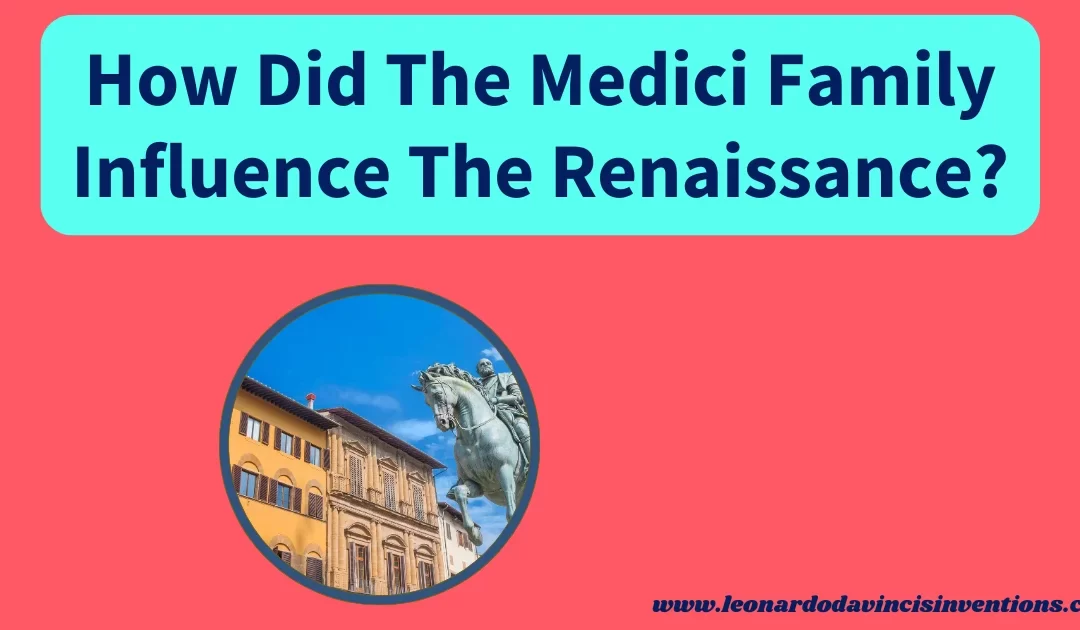
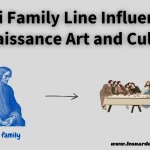
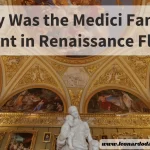
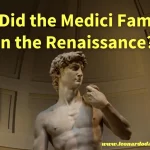
 Leonardo Bianchi,
the creator of Leonardo da Vinci's Inventions.
Thank you for visiting
Leonardo Bianchi,
the creator of Leonardo da Vinci's Inventions.
Thank you for visiting